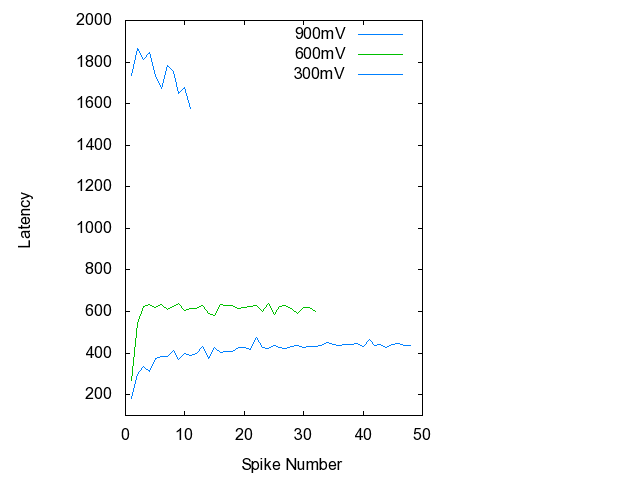Clamped Input
- The data initially had no input then 2 seconds of inhibitory
input (-300mV) then 2 seconds of none, then 2 seconds of
300mV input, 2 seconds of none, 2 seconds of 600mV, 2 seconds
of none, 2 seconds of 900 mV, 2 seconds of none and
then widely varying input.
- There weren't any spikes until the 300mV input started.
- Some analysis showed that spikes came roughly every 170ms.

- This allowed us to select the threshold at 1.46.
- However, when tried on the modelled 2 seconds of 600mV
we got firing every 3 time steps, while the biological data
said every 6.
- With 2 seconds of 900mV input the model predicted every 2 time steps,
while the data said every 4.
- Reducing D moved things in the right direction.
- D = 1.1 and Theta =2.6 fits the model to the data.
- Those are the parameters for the LIF model.



